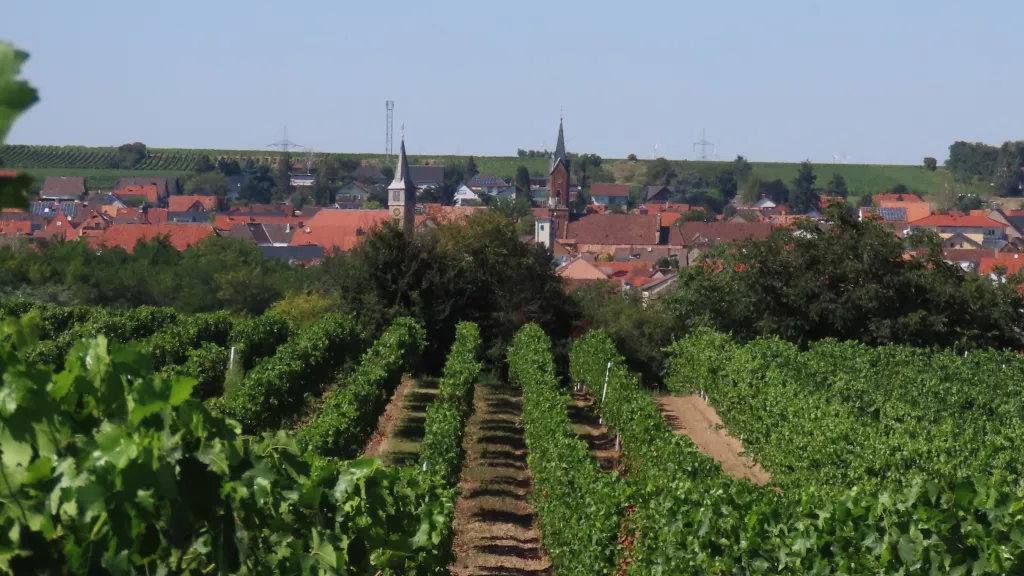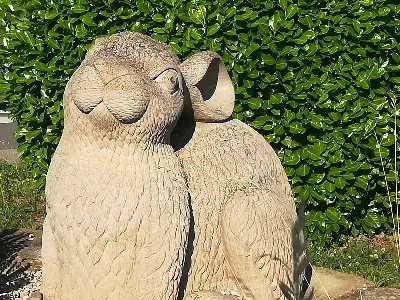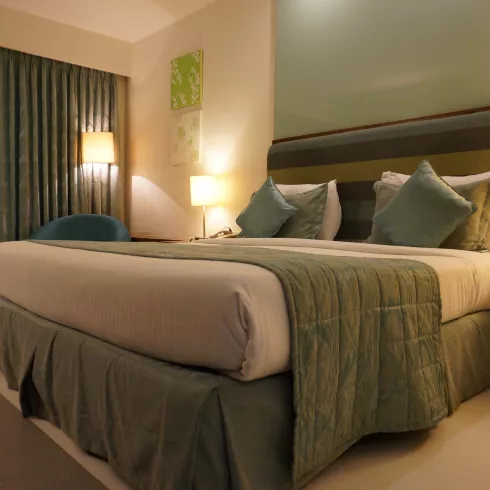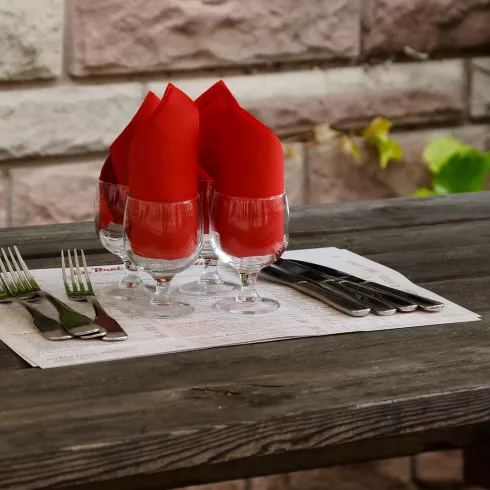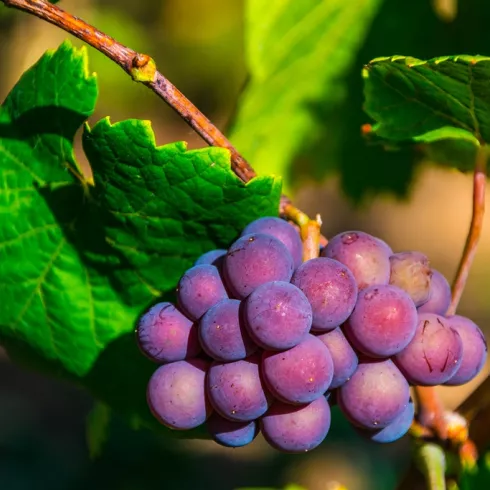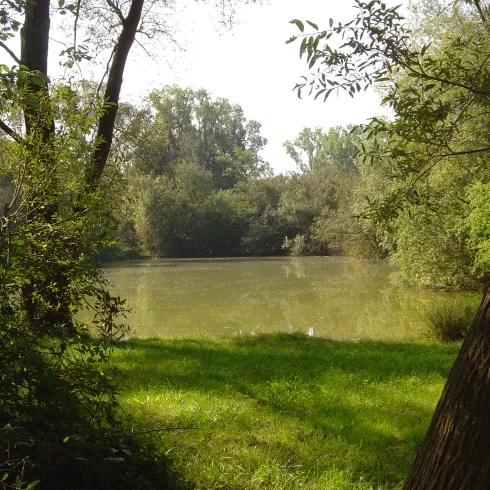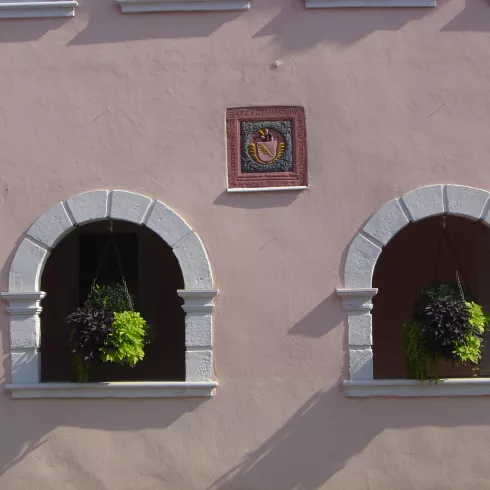Home of the sand hares.
The sandy soil that predominates here is responsible for the nickname of the Weisenheimians. The sand hare walking paths and the hare sculptures in the village show that it is possible to deal with nicknames very confidently.
The mild climate of the "Vorderpfalz" (eastern Palatinate) is responsible for Weisenheim am Sand's greatest treasure: its fruit and vegetable cultivation. Especially in spring, the fragrance and the splendour of the blossoms in the orchards attract many visitors.
In terms of its fruit cultivation, the village is not surpassed by any of the others in the Freinsheim holiday region. All kinds of pome, stone and berry fruits are harvested, but also the butter-tender asparagus, which thrives particularly well in the light soil. Wine has been cultivated since the 8th century. More than 360 hectares of vineyards belong to Weisenheim am Sand - this makes the village one of the larger wine-growing villages in the Palatinate.
The monasteries of Wörschweiler and Enkenbach as well as the Worms monastery of St. Paul had estates and farms here. In the Isenachtal valley you can still find remains of the mill and other buildings of the village of Eyersheim. The settlement was abandoned in the middle of the 15th century.
Weisenheim am Sand is first mentioned in 771 in the codex of the Lorsch Monastery and the Weissenburg Monastery. From 1209 onwards, "Wisa" or "Wissen" appears several times in writings of the monastery of Wörschweiler. There, the term "Weißhein uffm Sand" also appears for the first time in 1522. The village was called Wyshem in 1390 when it became a fief of Count Friedrich VII of Leiningen-Dagsburg. In 1467 it became Electoral Palatinate again and its inhabitants have been Reformed since 1556. After 1828, the village was called "Weißenheim".
You can relax in the local recreation area "Ludwigshain". The 50-hectare area with its small lake not only offers nature and bird lovers ample opportunity to observe and learn about the local flora and fauna. Rare birds can also be found here.
A special highlight is the traditional carnival procession "Rieslingwurm", which attracts thousands of spectators to Weisenheim am Sand every year.
Weisenheim am Sand is the second largest village in the Freinsheim holiday region and covers a total area of 1,500 hectares. In addition to the many attractive sporting opportunities offered by the local clubs (e.g. summer biathlon), equestrian sports are particularly popular in the community.
In addition to the "Heimat- und Museumsverein" (local history and museum society), the driving force in Weisenheim am Sand has for years been the active MUK (music and culture club), which offers top-class concerts, mainly rock, blues and soul, in the intimate atmosphere of the clubhouse in Ludwigshain or in the cult pub "Zum Adler". The programme of the MUK e.V. offers surprises and the tried and tested, but always worthwhile events.
